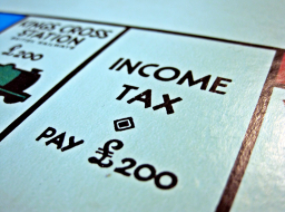Expected Economic Growth Across the Board

Google Common License
The most recent bill regarding American taxes was passed on November 15, 2017, and leaves the average American baffled at what it means for them and the future of America. The majority of Republicans rejoiced when this bill was verified, as Donald Trump claimed it would be the “biggest tax cut in our history”. Democrats, on the other hand, claim that the tax cut is geared towards the wealthy (the “top 1%”) rather than being a tax cut for the middle class. When taking a step back from the unnecessary amount of political turmoil from both sides, the feud between people who are for and against the tax cut come down to the classic Republican-Democrat debate of taxes; the question that asks will lowering taxes help the US was a whole? After thoroughly researching multiple sources, the conclusion can be made that the tax cut is a risky pro-economy and pro-middle class bill that is sure to bring change (being positive or negative) to America.
The bill does what it says; it cuts taxes. When looking into the statistics, there will be tax cuts across the board, increasing the closer you get to the middle class and decreasing as you reach the upper class.
What you define as the middle class is not the same for every situation. What is usually defined as the “middle class” doesn’t just depend on your yearly income, but location and family situations are also taken into consideration. For a person living alone, the income required to be classified as “middle class” is about $37k to $158k. For a married couple filing together (meaning they both have jobs and are sharing taxes), the “middle class” income ranges from $77k to $315k. The head of household, or the member of the family with the biggest income who doesn’t share the taxes, has an average income of $51k to $158k.
The lower middle class will have 12% of their taxes cut, and the upper middle class will receive a 15% cut. The lower middle class, once paying 25% of their yearly income to the government, will now pay 22%. The upper middle class, once paying 28% of their yearly income, will now pay 24%. The lower upper class only receives a 4% tax cut. Once paying 33% of their yearly income to the government, they will now pay 32%. The higher upper class receives a ~1% tax cut. Once paying 35% of their yearly income to the government, they will now pay ~35%, but no lower than 34%. The infamous top 1% receives a 7% tax cut. Once paying 39.6% of their yearly income to the government, they will now pay 37%. The lower class gets a 20% tax cut, with their yearly taxes being lowered to 12% of their yearly income from 15%. The lowest class will receive a .2% tax cut. Oncing paying 10% of their yearly income in taxes, now they will be paying 9.8%.
In conclusion, the people currently benefiting from The Tax Cut and Jobs Act are the lower and middle classes (people now paying 12%, 22%, and 24%). The question of this bill helping America in the long run remains unclear, but raw numbers and statistics prove that current state of taxes for the American citizen is a positive one.
Works Cited
https://www.factcheck.org/2017/11/gop-democrats-spin-tax-plan/
https://www.nerdwallet.com/blog/taxes/federal-income-tax-brackets/
https://www.factcheck.org/2017/11/trump-likely-benefits-tax-bills/
https://waysandmeansforms.house.gov/uploadedfiles/bill_text.pdf
https://www.jct.gov/publications.html?func=startdown&id=5026
https://www.irs.gov/businesses/small-businesses-self-employed/estate-tax
https://tradingeconomics.com/united-states/gdp-growth-annual
http://www.businessdictionary.com/definition/provision.html
